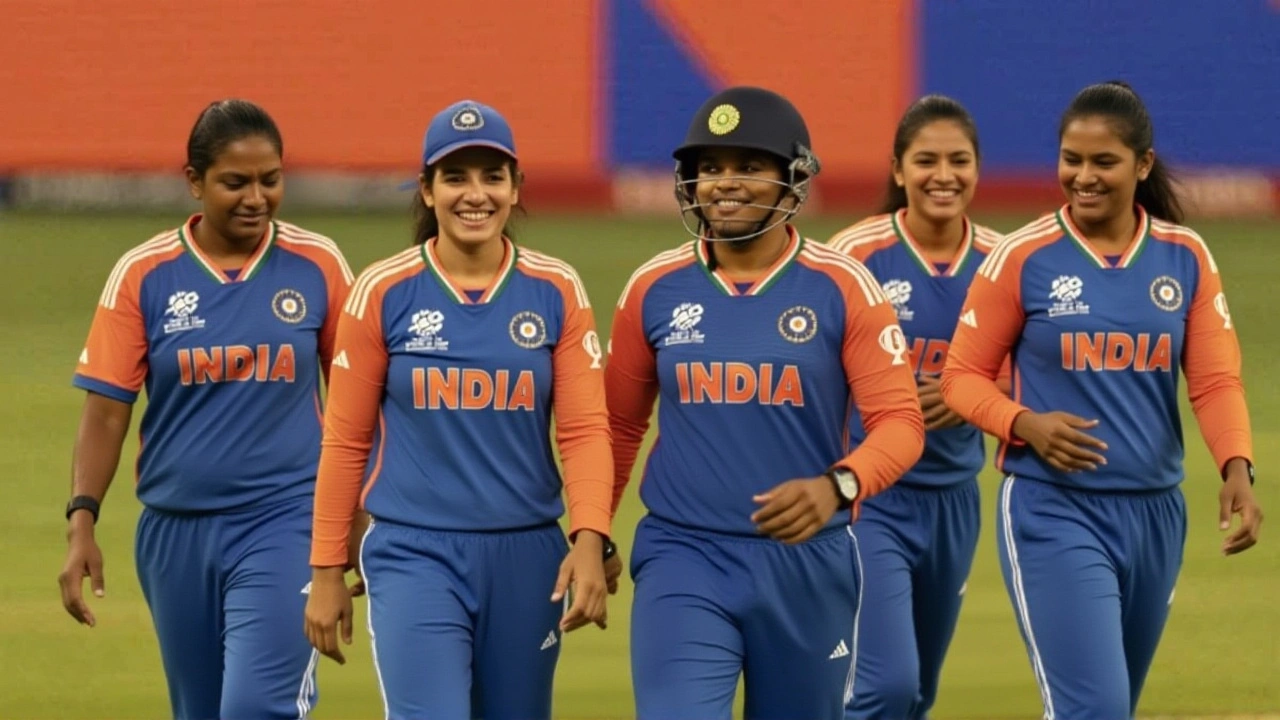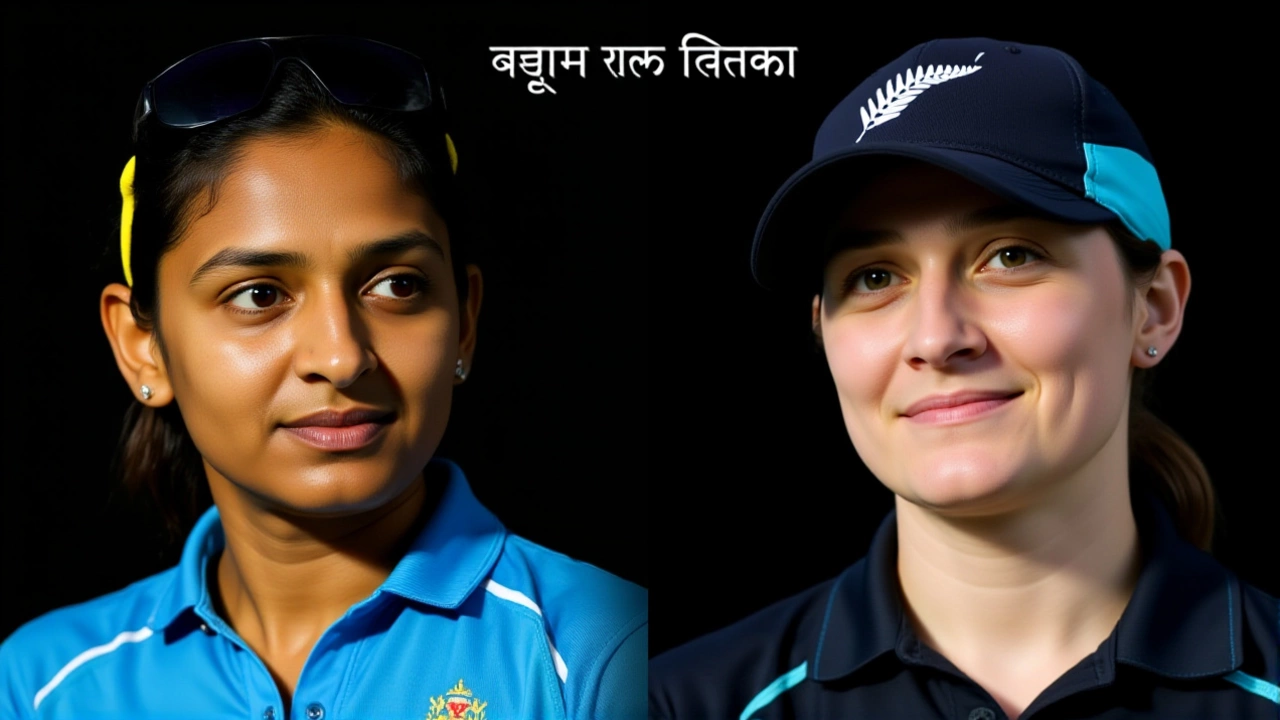When Sophie Devine, captain of New Zealand Women, won the toss at Dubai International Stadium on 12 October 2025, she chose to bat first in the ICC Women's T20 World Cup 2025. Across the same venue, India Women, led by Harmanpreet Kaur, would later chase a daunting target. The result – a 58‑run victory for the Kiwis – reshapes the group‑stage narrative and sets up a high‑stakes rematch on 23 October 2025 at Dr. DY Patil Sports Academy in Navi Mumbai.
Match‑by‑Match Summary
New Zealand posted 160/4 in their allotted 20 overs, a score powered largely by Devine’s unbeaten 57 off 36 balls (7 fours, strike‑rate 158.33). Right behind her, veteran Suzie Bates added 27, while rising star Georgia Plimmer smashed 34 at a brisk 147.83. The middle‑order contributions of Maddy Halliday (16*) and Amelia Kerr (13) ensured the total crossed the 150‑run barrier with six wickets in hand.
India’s reply stalled at 102 all‑out. Early wickets fell to the disciplined New Zealand bowlers – Lauren Anton (not in the original brief but a key bowler in the match) claimed two, and Maddy Halliday (who also bowled) added tight figures. Despite a brief flurry from Pratika Rawal (15) and keeper Uma Chetry (38), the Indian innings never found rhythm.
Key Performances and Turning Points
The innings pivoted when Devine lofted a six off the fourth over, instantly shifting momentum. Her partnership with Plimmer (34) yielded 78 runs for the third wicket – the highest stand of the match. For India, the crucial moment arrived at the 10‑over mark when wickets fell at regular intervals, stalling a required run‑rate that soon crept above 9.0.
"We knew the pitch would be a bit slow, but the ball came onto the bat nicely," Devine said post‑match. "Getting that quick start helped us set a platform for the middle order." Meanwhile, Kaur admitted her side needed a stronger top‑order launch: "The start didn't go our way, and the pressure built fast. We’ll regroup before the next game."
Umpiring and Officiating Highlights
The match featured a historic all‑female umpiring crew. England’s Anna Harris and Jamaica’s Jacqueline Williams took the on‑field duties, while Australia’s Claire Polosak served as the TV umpire. South Africa’s Shandre Fritz acted as match referee, and fellow South African Lauren Agenbag was the reserve umpire. Their smooth coordination kept the game flowing, with only one contentious LBW call that was upheld on review.
Tournament Context and Group Dynamics
Both sides entered the group stage with differing expectations. New Zealand, ranked third globally, sought a dominant start, while India, fresh off a warm‑up success (a rain‑adjusted 232/8 win on 27 September 2025 at BCCI Centre of Excellence 1 in Bengaluru), hoped to translate that momentum into the main event. The contrasting outcomes underscore how quickly fortunes can flip in a T20 setting.
The win lifts New Zealand to the top of Group B, giving them a crucial net‑run‑rate buffer. India, now sitting second, must win the remaining group matches to guarantee a Super Six spot.

Looking Ahead: The Navi Mumbai Showdown
October 23‑24 sees the two squads clash again at Dr. DY Patil Sports Academy. That venue, known for its lively crowds, could become the stage for redemption. Analysts predict a tighter contest, especially after India's recent batting resurgence in the warm‑up series where Kaur’s 69 and Deol’s 74 forged a 132‑run partnership.
"The next match is a perfect chance for us to bounce back," Kaur hinted in a press conference. "We’ve analyzed what went wrong and will come out stronger." Devine, meanwhile, emphasized retaining the aggressive intent that served her side well in Dubai.
Historical Perspective: Women’s Cricket’s Growing Profile
Since the inaugural ICC Women’s T20 World Cup in 2009, the tournament has expanded both in participation and viewership. The 2025 edition marks the first time the event is staged across three continents – the UAE, India, and Malaysia – reflecting cricket’s global reach. The rise of players like Devine and Kaur, who command both skill and media attention, fuels the sport’s commercial appeal.
Off the field, the increased representation of female officials, as seen in this Dubai match, signals a positive shift towards gender parity in cricket governance.
Frequently Asked Questions
How does the 58‑run win affect New Zealand’s chances in the World Cup?
The victory puts New Zealand atop Group B with a healthy net‑run‑rate, meaning they can afford a slip‑up in later matches and still progress to the Super Six stage. It also boosts team confidence heading into the crucial comeback game against India.
What were the key factors behind India’s collapsed chase?
Early wickets (four in the first six overs) disrupted the required‑run‑rate, and New Zealand’s disciplined bowling limited scoring opportunities. Additionally, a lack of aggressive intent from the top order left the middle order chasing an ever‑increasing total.
Will the upcoming match at Dr. DY Patil Sports Academy be a replay of Dubai?
Unlikely. India’s warm‑up performance showed they can chase large totals when the top order clicks, while New Zealand will aim to replicate their aggressive batting. Pitch conditions in Navi Mumbai are traditionally slower, which could favour the bowlers and make the contest tighter.
Who are the standout players to watch in the remainder of the tournament?
Sophie Devine continues to be a game‑changer with both bat and ball. Harmanpreet Kaur’s experience provides stability for India, while emerging talents like Georgia Plimmer for New Zealand and Shivani Das (India) could surprise opponents with fresh energy.
What does this match indicate about the development of women’s cricket globally?
The close competition, high‑scoring games, and the prestigious all‑female officiating crew illustrate the sport’s rapid professionalisation. Increased media coverage and competitive balance suggest that women’s cricket is moving toward parity with the men’s game in terms of viewership and commercial interest.
